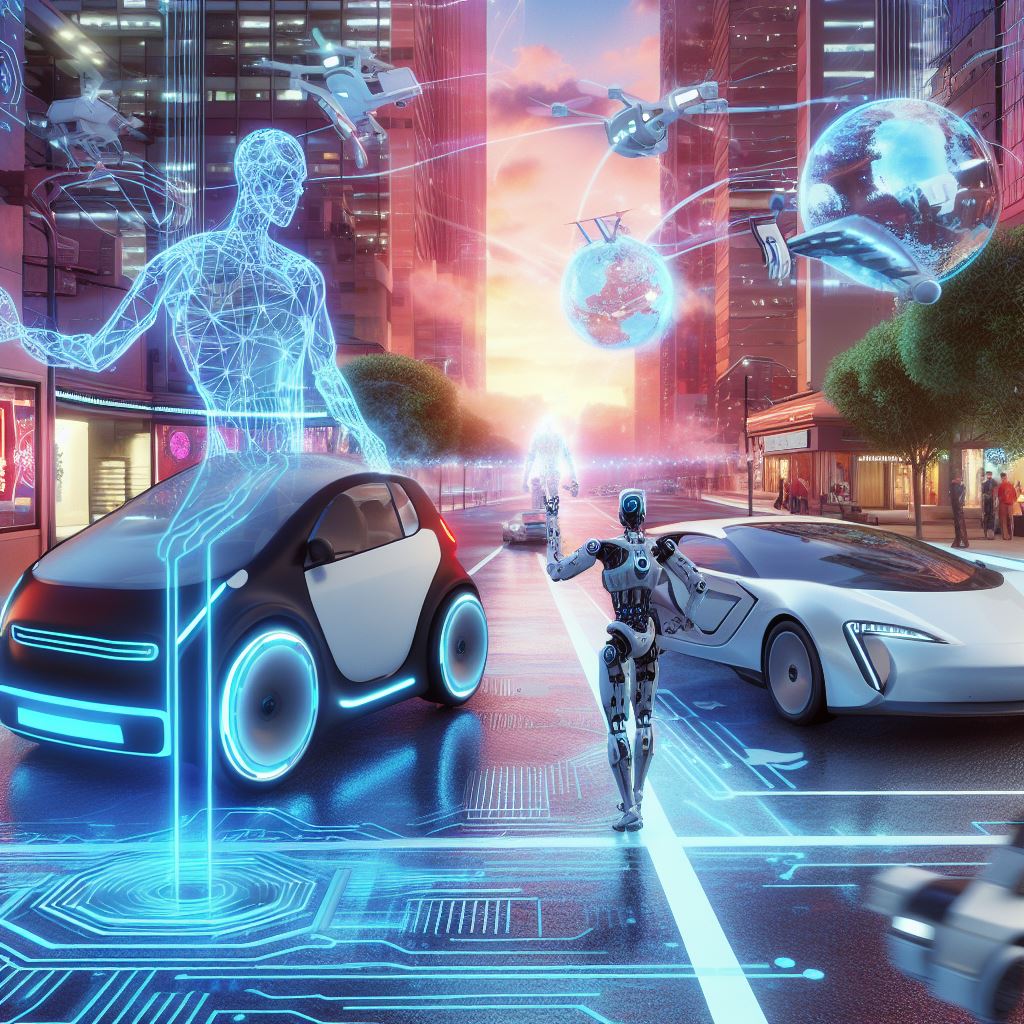The Transformative Role of AI in Autonomous Vehicles & Robotics
Overview
Input
How is AI used in autonomous vehicles and robotics?
Output
The Transformative Role of AI in Autonomous Vehicles and Robotics
Artificial Intelligence (AI) has become a driving force in the development of autonomous vehicles and robotics, revolutionizing the way these technologies function and interact with the world. Here, we delve into the multifaceted applications of AI in these domains, exploring the key roles AI plays in making vehicles and robots smarter, more efficient, and more capable.
AI in Autonomous Vehicles:
-
Sensory Perception: AI is the cornerstone of an autonomous vehicle's sensory perception. These vehicles are equipped with an array of sensors, including cameras, lidar, radar, ultrasonic sensors, and GPS. AI algorithms process the data from these sensors to perceive the vehicle's surroundings, detect obstacles, recognize road signs, and interpret traffic conditions.
-
Machine Learning for Recognition: AI-driven machine learning models play a crucial role in object recognition. These models are trained to recognize various objects such as pedestrians, other vehicles, road signs, and lane markings. AI systems can adapt to diverse environmental conditions, ensuring reliable recognition and safe decision-making.
-
Navigation and Path Planning: Autonomous vehicles rely on AI to make real-time decisions regarding navigation and path planning. AI algorithms consider sensor input, map data, and GPS information to determine the vehicle's route and navigate obstacles. They make decisions about acceleration, braking, and steering to ensure safe and efficient travel.
-
Driver Assistance Systems: AI is used in advanced driver assistance systems (ADAS) that enhance vehicle safety and driver comfort. These systems include features like adaptive cruise control, lane-keeping assistance, and automatic emergency braking, all of which are underpinned by AI algorithms.
-
Self-Driving Decision-Making: In fully autonomous vehicles, AI is responsible for decision-making in complex and dynamic traffic scenarios. These AI systems use deep learning and reinforcement learning techniques to adapt to ever-changing conditions, enabling vehicles to make split-second choices to avoid accidents and navigate traffic.
-
Data Fusion and Localization: AI helps fuse data from multiple sensors to create a coherent picture of the vehicle's environment. Simultaneously, AI aids in precise localization, enabling vehicles to know their position accurately on the road.
-
Continuous Learning and Updating: AI in autonomous vehicles is designed to continuously learn and adapt. It can benefit from shared data across the vehicle fleet, allowing all vehicles to learn from each other's experiences and improve collectively. This real-time learning is critical for refining vehicle behavior and enhancing safety.
AI in Robotics:
-
Perception and Object Recognition: AI enables robots to perceive their environment and recognize objects and obstacles. Computer vision and deep learning techniques help robots identify and locate objects, making them adept at tasks such as picking and sorting.
-
Natural Language Processing: Robots equipped with AI-driven natural language processing (NLP) capabilities can understand and respond to spoken or written commands. This is crucial for human-robot interactions and collaborative tasks in various industries.
-
Path Planning and Motion Control: AI algorithms help robots plan their movements and navigate through complex environments. These algorithms consider factors like obstacle avoidance, energy efficiency, and task optimization, allowing robots to operate autonomously and safely.
-
Machine Learning for Adaptive Behavior: Machine learning enables robots to adapt their behavior and responses based on experience and changing conditions. Reinforcement learning and neural networks help robots optimize their actions over time, becoming more efficient and effective in their tasks.
-
Collaborative Robots (Cobots): AI-powered collaborative robots, or cobots, are designed to work alongside humans. These robots use AI to detect and respond to human presence, ensuring safety and efficiency in shared workspaces.
-
Automation and Industrial Robotics: AI enhances the capabilities of industrial robots by enabling them to perform complex, high-precision tasks in manufacturing and assembly. These robots can assemble products, inspect quality, and carry out repetitive tasks with speed and accuracy.
-
Autonomous Drones: AI is integral to autonomous drones used in various applications, including aerial surveillance, agriculture, and delivery services. These drones use AI for navigation, obstacle avoidance, and image recognition.
-
Surgical Robots: In the field of healthcare, AI-powered surgical robots assist surgeons in performing minimally invasive procedures with exceptional precision. These robots use AI to ensure precise movements and optimize surgical outcomes.
The Synergy of AI and Robotics:
The synergy of AI and robotics has far-reaching implications. It makes robots more capable, versatile, and adaptable to diverse tasks and environments. AI enables them to learn from experience, communicate with humans, and operate efficiently in unstructured settings. In the case of autonomous vehicles, AI improves safety, enhances navigation, and holds the potential to transform transportation by reducing accidents and improving traffic flow.
The integration of AI into these technologies is a testament to the transformative power of AI in shaping the future of mobility, industry, and various other sectors. As AI and robotics continue to evolve, we can expect to see even more sophisticated and capable autonomous vehicles and robots, contributing to a wide range of applications and ultimately making our world more efficient and interconnected.



Comments
Be the first to comment!